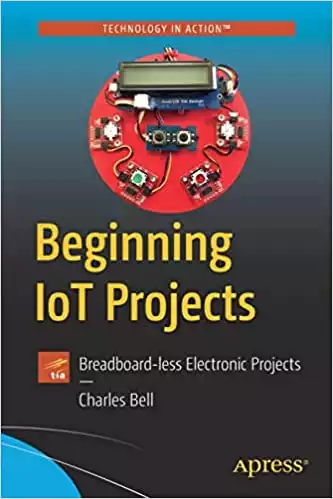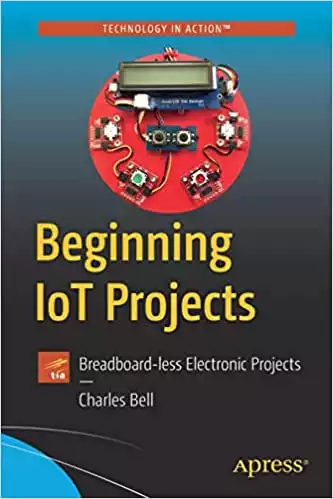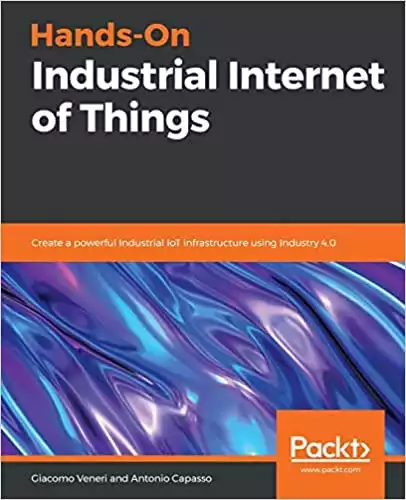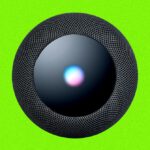Introduction: What is IoT?
The Internet of Things (IoT) is a term that is becoming more and more popular as time goes on. But what exactly is it, and what implications does it have for our lives? In this blog post, we’ll take a look at what the Internet of Things is, how it works, and some of the potential benefits involved.
The Internet of Things (IoT) is a network of physical objects connected to the internet and can collect and exchange data. This data can be used to monitor and control the objects and automate processes and tasks, reducing the need for human intervention.
In other words, the IoT is a way of connecting devices and objects to the internet so that they can communicate with each other. An IoT device can be anything from simple sensor technology to more complex devices like connected cars or smart appliances. You can already find connected physical devices in a variety of settings, including homes, businesses, factories, hospitals, and more.
Table of contents
Understanding the Basics of Internet of Things (IoT)
The Internet of Things (IoT) is an expansive system that interconnects physical devices, vehicles, buildings, and other items embedded with sensors, software, and network connectivity. These IoT devices collect and exchange data, thereby enabling a level of communication and interaction between objects, the environment, and people. It is projected that billions of devices, ranging from fitness trackers monitoring vital signs to smart thermostats regulating energy consumption, will be connected to the internet in the coming years.
Edge computing plays a crucial role in the functioning of the IoT landscape. With the increase in the number of internet-connected devices, the amount of data generated is massive. Sending all this data to a centralized location for processing can lead to latency issues and excessive energy consumption. Edge computing resolves this issue by performing data processing at the edge of the network, near the source of the data. This reduces the latency and bandwidth use, making real-time processing and insights possible and enhancing the efficiency of IoT devices.
The advent and proliferation of IoT also bring about a series of security issues. Given that these devices interact with the physical world and human interaction, they often hold sensitive data, making them attractive targets for cyberattacks. Therefore, it’s imperative to ensure robust security measures are in place to protect data privacy and integrity. As the IoT ecosystem continues to grow and evolve, understanding and mitigating these security concerns will be of paramount importance to ensure the safe and reliable operation of IoT devices.
Why is the Internet of Things (IoT) so important?
The Internet of Things (IoT) is important because it has the potential to change the way we live, work, and play. As device communication continues to increase, we’re seeing a shift from traditional offline interactions to digital ones. And this shift is only going to continue as the IoT grows. Very soon, IoT will connect most of our everyday objects to the Internet Protocol and be capable of exchanging data.
Through the use of IoT, companies automate processes and reduce their labor costs. IoT can help reduce the waste associated with manufacturing and help speed up delivery of goods. This will help reduce costs of manufacturing in the long run while improving customer service and reducing costs of goods.
This has several implications for our lives. For one, it means that we’ll have more information available to us than ever before. We’ll also be able to track and monitor our activities in ways that were not previously possible. IoT will help companies reduce cost while improving production which will in turn help customers purchase goods at lower cost.
IEEE Systems Journal
A great resource for all things IoT is IEEE Systems Journal, a peer-reviewed, technical journal that covers the field of systems science and engineering. The journal publishes original papers, reviews, case studies, and more. In recent years, the IEEE systems journal has published a number of articles related to IoT, including “A Survey of Industrial Internet of Things.”
There is also the Network World, which is an online community for IT professionals. The site offers a variety of resources, including blogs, news, and how-to articles. Network World also offers a variety of webinars on topics related to IoT. These webinars are led by industry experts and provide valuable insights into the world of IoT.
The Architecture of IoT: Devices, Networks, and Cloud
The architecture of the Internet of Things (IoT) is a critical aspect of its functionality, primarily consisting of devices, networks, and cloud components. At the most fundamental level, IoT devices are equipped with sensors and actuators that interact with the environment. These devices can be as simple as a temperature sensor in a smart home system or as complex as a network of sensors in an industrial manufacturing plant. These sensors gather data from the environment, and actuators perform actions based on specific conditions. For instance, a smart thermostat might trigger the heating system when the temperature drops below a certain level.
The network component of IoT architecture is responsible for connecting these devices to the internet and enabling them to communicate with each other and the cloud. This can involve various types of networks, such as local area networks (LANs), wide area networks (WANs), or even cellular networks. The choice of network can depend on several factors, including the distance over which the data needs to be transmitted and the amount of data involved. Protocols like MQTT (Message Queuing Telemetry Transport) or CoAP (Constrained Application Protocol) are often used for lightweight and efficient data transmission in IoT systems.
The cloud component in the IoT architecture serves as the central hub for data storage, processing, and analysis. It is here that the vast volumes of data collected by IoT devices are processed and turned into actionable insights using analytics and machine learning algorithms. The cloud also provides the computational resources needed to support advanced applications such as predictive maintenance in industrial IoT or patient health monitoring in healthcare IoT. Therefore, the combination of devices, networks, and cloud components in the IoT architecture enables seamless connectivity, real-time data processing, and efficient decision-making, which are the core tenets of IoT functionality.
What technologies have made IoT possible?
The Internet of Things is just now starting to become a reality, but not for lack of interest or effort. A number of different technologies have been developed over the years that have made IoT possible. Other than the Internet Protocol itself, these include:
- Event Queuing
- Ambient Intelligence
- Connectivity to Cloud Services
- Smart grids
- Access network
- Remote Control and Autonomous control
Event Queuing
Event queuing is a way of organizing and managing data so that it can be processed in a timely manner. Oftentimes data needs to be processed quickly in order to be useful. For example, if you’re monitoring your heart rate with a wearable device for event queuing, you’ll want the data to be sent to your doctor as soon as possible so that they can take action if necessary.
Ambient Intelligence
Ambient intelligence is a term that refers to the ability of devices to detect and respond to their surroundings. It can automatically turn lights off when there’s no one in the room or adjust the thermostat based on the number of people in the house. Ambient intelligence is important for IoT because it allows devices to interact with their surroundings without human intervention. We also need ambient intelligence for things like automated driving, as it allows cars to sense and respond to their surroundings.
Connectivity to Cloud Services
In order for devices to be able to exchange data, they need to be connected to the internet. And in order for them to be connected to the internet, they need some connectivity to cloud services. They provide a way for devices to connect to the internet and exchange data.
Data aggregation systems like Amazon Web Services (AWS) IoT are examples of cloud services that devices can use to connect to the internet. These platforms provide a way for devices to send and receive data, as well as to interact with other devices.
Smart grids
The smart grid is a new type of electrical grid that leverages IoT to improve efficiency and reliability. With the smart grid, businesses can use IoT data to track the flow of electricity, optimizing the distribution of power.
Also Read: AI and Power Grids.
Access network
An access network is a type of network that connects devices to the internet. There are many different types of access networks, but the most common are wired and wireless connectivity. In the world of IoT, the access network is the foundation on which everything is built. Without an access network, devices would not be able to communicate with each other or with the internet.
Remote Control and Autonomous control
In order for devices to be able to interact with each other, they need some way to communicate. This communication can be either remote control or autonomous control. A remote control is when a human controls the device from a distance. Autonomous control is when the device is able to independently control itself.
Machine learning and analytics
Businesses can collect insights faster and more easily with the combination of advances in artificial intelligence, machine learning, analytics, and access to a vast amount of data in the cloud. As these technologies emerge, they continue to push the boundaries of IoT and the data collected.
Conversational artificial intelligence (AI)
Natural-language processing (NLP) has been enhanced with advancements in neural networks to be incorporated into IoT devices (including digital personal assistants such as Alexa, Cortana, and Siri) and is more appealing, affordable, and useful for the average person.
What is industrial IoT?
We’ve gone over IoT in the residential setting, but what about industrial settings? Industrial IoT (IIoT) is the application of IoT technology in an industrial environment. These industries include factories, warehouses, mines, and more. Industrial IoT can be used to improve efficiency and productivity and create new business models and revenue streams.
The industrial internet of things (IIoT) is the use of data, sensors and actuators to improve manufacturing and industrial processes. With the help of IIoT you can reduce the risk profile in manufacturing by monitoring data at every step of the process. Industrial IoT helps with the following –
- Smart manufacturing
- Connected assets
- Preventive and predictive maintenance
- Smart power grids,
- Smart cities
- Supply chain
- Smart logistics.
By collecting data from connected devices and using that data to create new insights, businesses can develop innovative new offerings that enhance customer experience.
Unlock business value with IoT
Data defines the modern business landscape. Businesses that can collect and analyze data effectively have a major competitive advantage over those that cannot. And the IoT provides a unique opportunity for businesses to collect data at an unprecedented scale.
Business-ready, SaaS IoT Applications
In addition to the data and insights that businesses can collect from IoT devices, there is also a growing ecosystem of business-ready, SaaS IoT applications. Software-Defined Networking (SDN), for example, is a system that can be used to manage and monitor IoT devices.
Simply put, Software Defined Networking (SDN) is a network architecture that allows businesses to centrally manage and remote control their networks.
What are some ways IoT applications are deployed?
IoT applications can be deployed in a number of different ways. The most common deployment methods are:
- On-premises: IoT applications are installed on local servers and managed by IT staff.
- Cloud-based: IoT cloud applications are hosted in the cloud and accessed via internet connectivity.
- Hybrid: IoT applications are deployed both on-premises and in the cloud.
The best deployment method for your business will depend on a number of factors, such as budget, IT resources, and data security concerns.
Improve the tracking and “ring-fencing” of physical assets with IoT.
One of the most common uses for IoT is asset tracking. By tagging assets with RFID tags or GPS trackers, businesses can keep track of their location and movements in real-time. This data can be used to improve the efficiency of asset utilization and prevent loss or theft.
Asset tracking is often used in conjunction with other cloud applications, such as fleet management, inventory control, and maintenance schedule.
We should also mention the smart grids. The smart grid is a new type of electrical grid that leverages IoT to improve efficiency and reliability. With the smart grid, businesses can use IoT data to track the flow of electricity, optimizing the distribution of power.
Use wearables to monitor human health analytics and environmental conditions.
Wearable technology is another type of connected device that is often used in IoT applications. Wearables are small, lightweight devices that humans can wear on the body. They are often used to track fitness data, such as steps taken, heart rate, and calories burned. They can also be used to monitor other health metrics, such as blood pressure and blood sugar levels.
In an industrial setting, wearables can be used to monitor environmental conditions, such as temperature and humidity. They can also be used to track workers’ exposure to hazardous materials. By monitoring these conditions in real-time, businesses can take proactive steps to protect the health and safety of their employees.
Drive efficiencies and new possibilities in existing processes with IoT.
In the supply chain, businesses can use IoT to track inventory levels and the movement of goods. This data can be used to optimize stock levels, as well as to predict delays and disruptions. In manufacturing, businesses can use IoT to monitor equipment for maintenance purposes. This data can be used to improve the efficiency of production, as well as to reduce downtime.
Enable business process changes with IoT.
Finally, businesses can use IoT to enable entirely new business models and processes. For example, businesses can use IoT data to offer pay-as-you-go insurance plans. They can also use IoT data to provide predictive maintenance services. By leveraging the power of IoT, businesses can create entirely new sources of revenue and competitive advantage.
What industries can benefit from IoT?
As you can see, there is a wide range of potential cloud applications. Not all industries will benefit from IoT in the same way. Here are the industries that are most likely to benefit from IoT:
Healthcare
The healthcare industry is under immense pressure to improve patient outcomes and reduce costs. The interaction of devices can play a role in achieving these goals. For example, hospitals can use IoT data to track the movement of patients and staff. This data can be used to optimize the flow of traffic, as well as to identify potential bottlenecks.
Retail
Another industry that is likely to benefit from the interaction of devices in retail. Retailers can use IoT data to track the movement of goods through their supply chain. Using IoT, businesses can now optimize inventory levels, as well as predict delays and disruptions. With this data, they can improve the layout of stores, as well as identify potential areas of improvement.
Also Read: 6 Best Examples of IoT in the Retail Industry.
Farming
Farming is another industry that can benefit from the interaction of smart devices. Farming techniques are constantly evolving, and IoT can help farmers stay ahead of the curve. Farmers can use IoT data to track the condition of their crops. With IoT, they can optimize irrigation and fertilization, as well as predict yields. They can also monitor the health and productivity of their livestock.
Also Read: Smart Farming using AI and IoT.
Transportation
The transportation industry, which includes everything from logistics to automotive, is under immense pressure to improve efficiency and reduce costs. Internet connectivity can play a role in achieving these goals. When it comes to logistics, businesses can use IoT data to track the movement of goods through the supply chain.
How is IoT changing the world?
Connected cars.
IoT is changing the world in a number of ways. One of the most significant ways is through connected cars. You’ve likely heard of Tesla, one of the most well-known companies in the space. Have you ever wondered how their self-driving cars work? The answer is connected cars.
Autonomous driving is possible thanks to cars equipped with motion sensors and other devices that allow them to collect data about their surroundings. Sensor technology data is then transmitted to the cloud, which is processed and analyzed. The data is used to create a map of the car’s surroundings. The car’s computer is powered by artificial intelligence and uses this map to navigate.
Autonomous driving is still in its early stages of development. They are expected to have a major impact on the world. Imagine ride-sharing services that can pick you up and drop you off without the need for a driver. Or imagine a world where traffic jams are a thing of the past because communication between devices like cars can avoid congestion. Connected cars have the potential to change the way we live and work.
Also Read: AI and Autonomous Driving.
Transportation and Logistics
A variety of IoT-enabled applications are being used in the transportation and logistical industries. It is possible to reroute fleets of trucks, cars, ships, and trains that are carrying inventory based on the weather conditions, vehicle availability, or driver availability, using IoT sensor data. It is also possible to be able to equip the inventory directly with tracking and tracing/temperature-control sensors. There are often temperature-sensitive products in industries such as food and beverage, flowers, and pharmaceuticals that would greatly benefit from IoT sensor applications that could alert the companies when temperatures rise or fall to a level that threatens the safety of the product.
Connected homes
In addition to autonomous driving, IoT is also changing the way we interact with our homes. Smart homes are becoming more and more common. These homes are equipped with smart devices that can be controlled remotely. For example, you can use your smartphone to turn on the lights, adjust the thermostat, or even unlock the front door.
Smart homes are convenient, but they also offer a number of other benefits. They can help you save energy because you can control your smart objects remotely. You can also use smart home devices to improve your security systems. For example, you can receive alerts if a window is broken or someone enters your home.
Retail
It’s no secret that IoT applications can make retail companies more efficient in terms of managing inventory, improving customer experience, optimizing supply chain, and reducing operational costs. If you are using smart shelves, for instance, you can attach RFID-based sensors to the shelves to collect weight data and then send that information to the IoT platform to enable the platform to automatically monitor inventory and send alerts when items are running low on stock. To provide an engaging and personalized experience, beacons can push targeted offers and promotions to customers.
Public Sector
Public sector and other service-related environments can also reap the benefits of the Internet of Things (IoT). A good example is the ability of government-owned utilities to use IoT-based applications to notify users of outages, whether it be a mass outage or a smaller interruption in water, power, or sewer service. In this age of Internet of Things applications, utilities can collect data concerning the extent of an outage and deploy resources in order to speed up their recovery from outages.
Security Concerns in IoT: Privacy, Data Protection, and Cyber Threats
Security concerns in the Internet of Things (IoT) extend from privacy and data protection to significant cyber threats, due largely to the interconnected nature of the devices, their pervasiveness, and the massive amounts of data they handle. Privacy concerns arise as IoT devices, which are typically embedded in our daily lives, collect a plethora of sensitive personal data. For instance, a smart home system might track when an individual is home, their energy consumption habits, or even their vital signs in the case of wearable technology. These issues of privacy extend beyond the individual to larger organizations undergoing digital transformation, where IoT deployment may involve customer pull data that, if mishandled, could lead to serious breaches of trust and legal repercussions.
Data protection becomes a critical aspect to consider within IoT, as devices network and communicate with each other, often over unsecured channels. Even if basic security measures are in place, such as password protection and encryption, the vast surface area of attack vectors in an IoT system makes it inherently vulnerable. Communication security technology is of prime importance, and securing the application layer of the IoT system, which communicates with the event hub, requires careful consideration and robust protocols.
Cyber threats to IoT systems represent a rapidly evolving landscape of risks. Infected devices can be used to launch Distributed Denial of Service (DDoS) attacks, or even serve as entry points into broader network systems. Security researchers continually work to understand and mitigate these threats, but the naming protocols and dynamic nature of IoT devices make this a complex task. As IoT continues to expand and integrate more deeply into our lives and work, the task of ensuring security must be given priority, with the understanding that it is not just about protecting devices, but about safeguarding the privacy and data of individuals and organizations.
IoT in Everyday Life: Smart Homes, Wearables, and Consumer Electronics
IoT technology permeates everyday life, especially in the form of smart homes, wearables, and consumer electronics. Pervasive computing, also known as ubiquitous computing, brings about a seamless integration of IoT devices in our daily routines, significantly enhancing our living standards and efficiency. Smart home devices, such as thermostats, lights, and security systems, adjust energy usage based on our habits, improving both comfort and energy efficiency. Smart speakers offer voice-controlled assistance and home automation capabilities, bringing about a revolution in human-computer interaction. IoT-enabled medical devices monitor health parameters continuously, providing real-time insights and alerts that significantly enhance healthcare delivery.
The proliferation of IoT devices and the shift to Software Defined Networks also highlight the limitations of communication security and the challenges of managing a broad network of devices. The wireless connectivity these devices rely on makes them potentially vulnerable to security breaches, including data theft and malicious control. IoT devices often work on Generation Computer Systems, with thousands or even millions of devices intercommunicating, which increases the complexity of maintaining security. Thus, while IoT technology brings about enormous benefits in terms of automation and efficiency, it also poses challenges in maintaining security and privacy, necessitating robust protocols and constant vigilance to keep the systems secure.
Future Trends and Challenges in the IoT Landscape
As the IoT landscape continues to evolve, billions of devices are being interconnected, leading to increasingly complex networks and significant challenges. Devices range from simple smart speakers to complex medical devices, and all require robust security measures to protect user data. For instance, IoT-enabled medical devices such as insulin pumps and pacemakers, which offer autonomous control for vital health functions, are becoming more prevalent. These devices are also potential targets for cyber attacks, with grave consequences. Security researchers, thus, are constantly striving to identify potential threats and strengthen the security of these devices.
Looking ahead, one of the most promising, yet challenging, aspects of the IoT landscape is the interaction of devices and their connectivity to cloud-based applications. On the one hand, cloud connectivity allows remote control and real-time data analysis, which dramatically increases the usefulness and versatility of IoT devices. On the other hand, the move to cloud-based control also raises significant privacy issues. For instance, the data collected and transmitted by these devices could potentially be used to control society or infringe upon personal privacy if it fell into the wrong hands. Therefore, as the IoT continues to evolve and expand, the balance between harnessing its benefits and managing its risks will be a key focus area.
The Intersection of IoT with Other Emerging Technologies: AI, Blockchain, and 5G
The Internet of Things (IoT) landscape is rapidly expanding, thanks in part to the intersection with other groundbreaking technologies such as artificial intelligence (AI), blockchain, and 5G. These technologies complement the IoT ecosystem by enabling enhanced autonomy, connectivity, and security across a board network of interconnected devices. Artificial intelligence, for instance, powers autonomous control of IoT devices, facilitating smart decisions based on data captured in real-time. A common example is the control of insulin pumps which are designed to self-regulate insulin levels based on a patient’s specific needs, minimizing manual adjustments and reducing risks.
Blockchain, on the other hand, addresses the security issues within the IoT. Given the vast number of interconnected devices in the IoT ecosystem, there’s a significant risk of data breaches and infected devices, as well as privacy concerns. Blockchain, with its distributed ledger technology and strong encryption, presents a robust solution for these challenges, enforcing basic security measures and improving communication security technology. The advent of 5G networks plays a critical role in supporting the IoT ecosystem by providing faster data transfer rates and lower latency, enabling seamless interaction of devices, even in densely populated IoT environments like smart cities. With these emerging technologies, the next generation of computer systems stands to redefine the IoT, further enabling the digital transformation we are witnessing today.
Conclusion:
With the help of low-cost computing, the cloud, big data, analytics, and mobile technologies, physical IoT sensors have the ability to actively share and collect data with minimal human intervention. It is inevitable that digital systems can record, monitor, and adjust each interaction between the things in this hyperconnected world. The physical and the digital interact with one another, and they help each other along the way.
IoT is going to be part of an eco-system that will transform our everyday lives for good. We are living in exciting times and observing these changes brought in by IoT, AI and Robotics.
References
Adryan, Boris, et al. The Technical Foundations of IoT. Artech House, 2017.
Davies, John, and Carolina Fortuna. The Internet of Things: From Data to Insight. John Wiley & Sons, 2020.
Kapoor, Amita. Hands-On Artificial Intelligence for IoT: Expert Machine Learning and Deep Learning Techniques for Developing Smarter IoT Systems. Packt Publishing Ltd, 2019.
Lea, Perry. Internet of Things for Architects: Architecting IoT Solutions by Implementing Sensors, Communication Infrastructure, Edge Computing, Analytics, and Security. Packt Publishing Ltd, 2018.
Roshak, Michael. Artificial Intelligence for IoT Cookbook: Over 70 Recipes for Building AI Solutions for Smart Homes, Industrial IoT, and Smart Cities. Packt Publishing Ltd, 2021.













